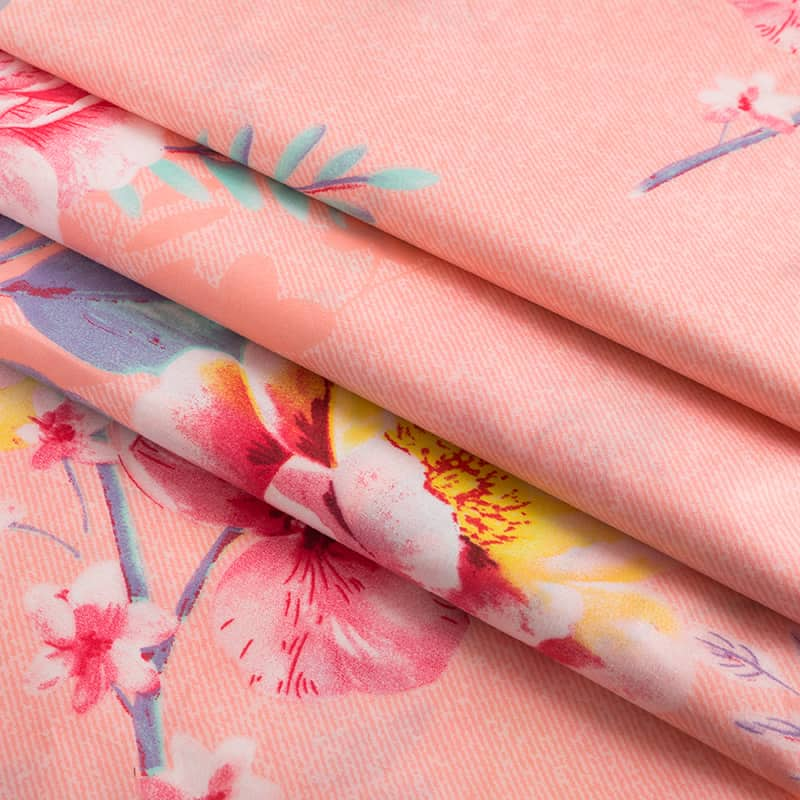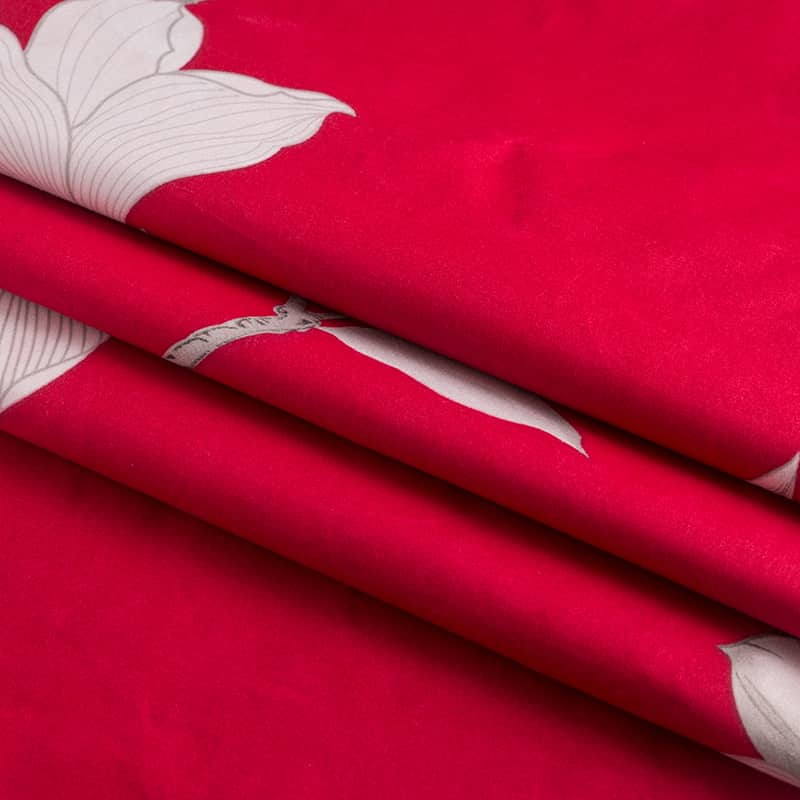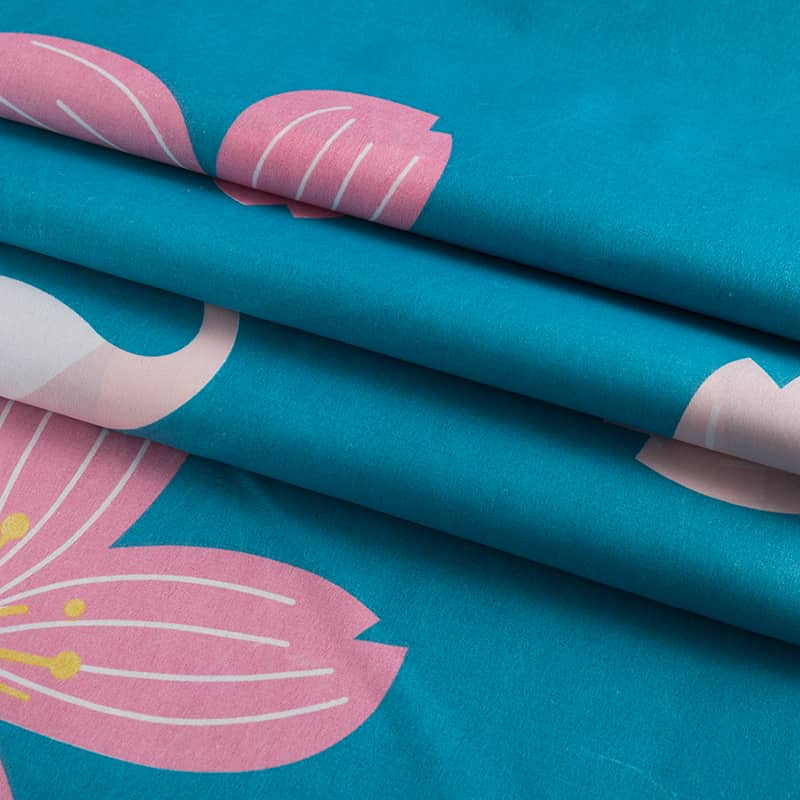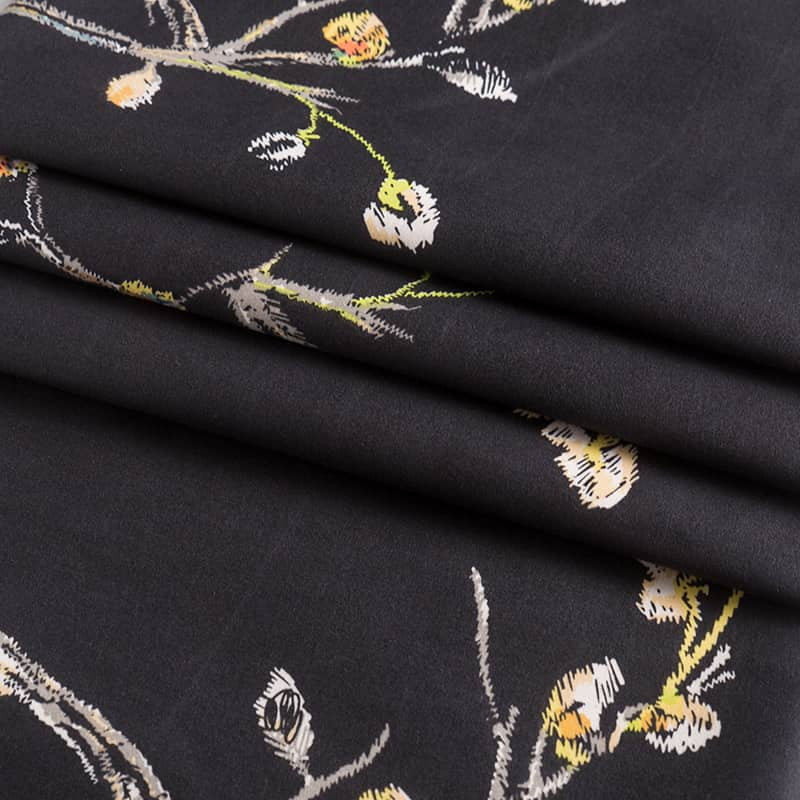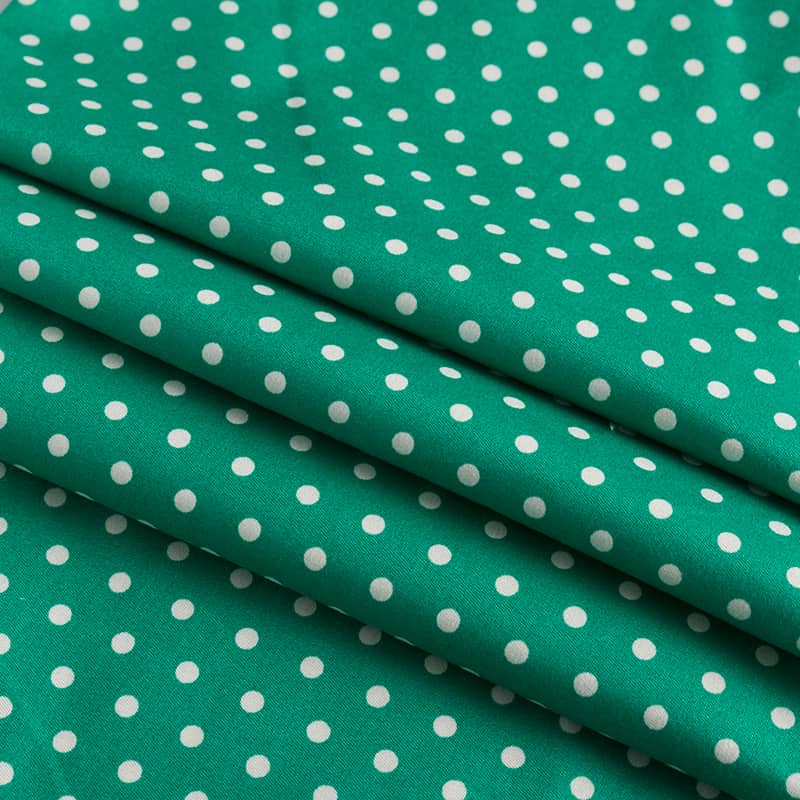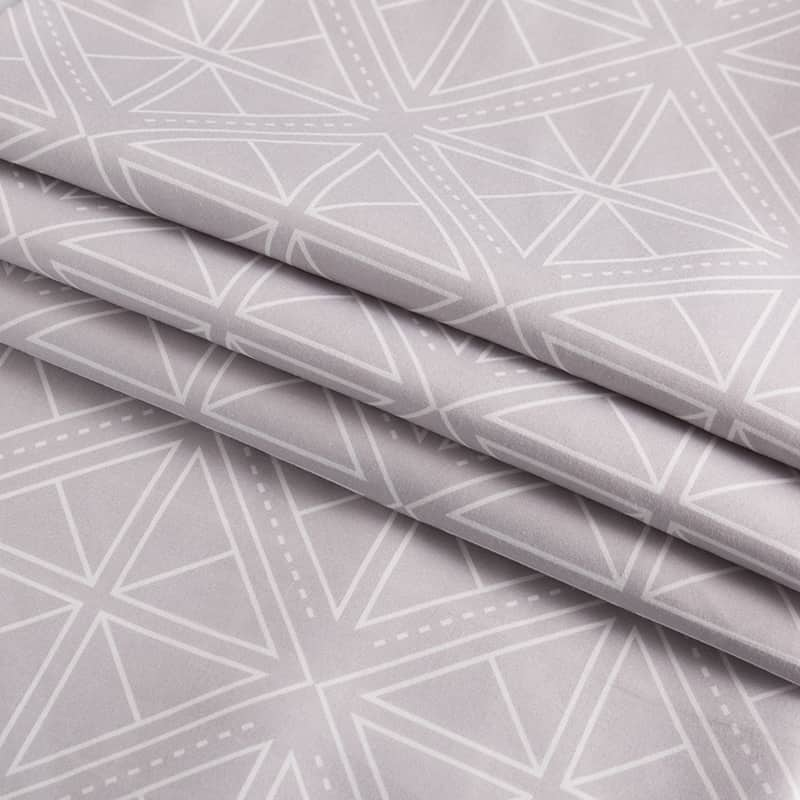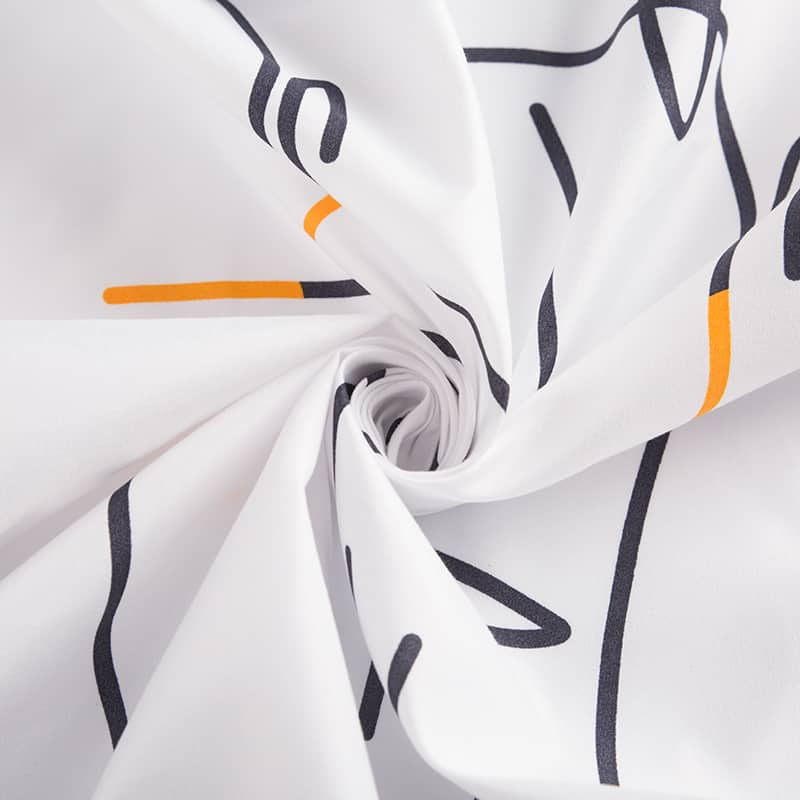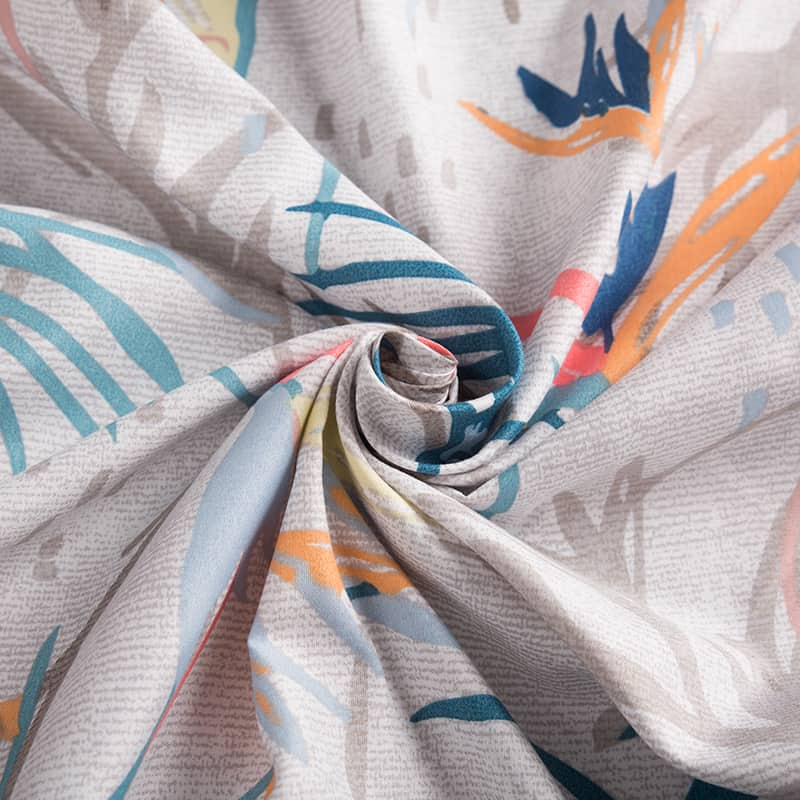Dispersed printed fabric, also known as disperse dye printing, involves the application of disperse dyes onto synthetic fibers through a heat transfer process. The dyes are converted into a gaseous state and infused directly into the fabric's fibers, resulting in vivid and long-lasting colors. This process ensures that the printed design becomes an integral part of the fabric, enhancing its durability and resistance to fading.
One of the standout features of dispersed printed fabric is its ability to reproduce intricate designs with exceptional detail and precision. The technique enables designers to showcase intricate patterns, delicate motifs, and realistic imagery, all with impressive clarity. Whether it's floral prints, geometric patterns, or abstract designs, dispersed printed fabric brings them to life with vibrant colors and sharp definition.
The versatility of dispersed printed fabric is another factor that contributes to its popularity. It can be applied to a wide range of fabrics, including polyester, nylon, and acetate. This flexibility allows designers to explore various textures, finishes, and applications, from clothing and accessories to home furnishings and upholstery.
Moreover, dispersed printed fabric offers an array of benefits for both designers and consumers. The colorfastness of the dyes ensures that the printed designs retain their vibrancy even after repeated washing and exposure to sunlight. This durability makes dispersed printed fabric a practical choice for everyday clothing and household items.
Additionally, dispersed printed fabric offers a higher level of customization compared to traditional printing methods. Designers have the freedom to experiment with unlimited color options, intricate details, and photorealistic imagery. This versatility enables them to create unique and personalized designs that resonate with their brand identity or customer preferences.
The advent of dispersed printed fabric has also contributed to sustainability efforts in the textile industry. The process utilizes water-based dyes, which are considered more eco-friendly compared to other dyeing methods. Additionally, dispersed printed fabric allows for precise color placement, reducing the overall amount of dye and water usage, thus minimizing waste.
Furthermore, dispersed printed fabric has found applications beyond the fashion industry. It is increasingly being used in interior design to create statement pieces such as curtains, upholstery, and wall coverings. The vibrant and detailed designs add personality and a touch of artistry to living spaces, transforming them into unique and visually captivating environments.
In conclusion, dispersed printed fabric has revolutionized the world of textile design with its intricate detail, vibrant colors, and durability. The technique's ability to reproduce complex designs with exceptional clarity has opened up new avenues for creativity and self-expression. As consumer demand for unique and personalized textiles continues to grow, dispersed printed fabric is poised to play a significant role in shaping the future of fashion, home decor, and other textile applications. With its limitless design possibilities and commitment to sustainability, dispersed printed fabric is truly transforming the world of textiles into a vibrant and dynamic canvas.



 英语
英语 西班牙语
西班牙语
